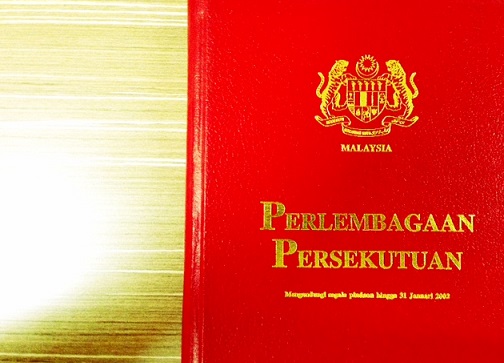Our Merdeka Constitution originally provided for an independent EC to assign seats to each State based on population, and to divide each State into constituencies, such that the number of voters in each constituency should not deviate from the average in that State by more than 15%.
In 1960, the EC did its job so impartially that the Alliance Govt amended the Constitution to try to remove the EC Chairman. It failed.
In 1962, it amended the Constitution to retrospectively annul the 1960 redelineation and to require the EC to submit each new redelineation to the PM for the approval of the Dewan Rakyat, giving the PM a right to make modifications.
The 1962 amendment also changed the rural weightage so that urban constituencies could be up to twice the size of rural constituencies.
In 1973, the Constitution was amended to remove this limit altogether.
Both these amendments were supported by the MCA and MIC.
Hence, today within the same State, Kapar with 144,369 voters is nearly four times the size of Sabak Bernam, with 37,390 voters. 1 vote in Sabak Bernam is worth 4 votes in Kapar.
Before 1963, each State was allocated seats based on population and number of voters. In 1963, the Malaysia Act gave the States of Malaya, Sabah, Sarawak and Singapore each a fixed number of seats, with 1/3 of the seats going to the new States to allow them to block constitutional amendments.
But that 1/3 blocking vote disappeared when Singapore left in 1965 (Sabah & Sarawak now have 25% of the seats).
In 1973, the Constitution was again amended to fix the number of seats given to each of the States and Federal Territories.
Although amended from time to time, the way that this has been done, in the most recent instance, has led to gross underrepresentation of Selangor, KL & Trengganu, and overrepresentation of Johore, Perak, Perlis and Pahang.
Correcting this would give Selangor alone an extra 6 seats and reduce by 6 in total the number given to Johore and Pahang.


The amendments made in 1962 and 1973 would have been unconstitutional as they were against the very basic principle of a democracy of one person, one vote. The original 15% difference would be acceptable as it would be impossible to draw up constituencies with exactly the same number of voters.
Could some constitutional lawyers please look into this and if if possible, go about annulling these amendments?
When a computer misbehaved there is a reset button to restart the machine. How I wished that this problem can be resolved in such a manner.
DSAI knew about it going into GE. but unfortunately the marginal 2000 vote seats cost PR the key to Putrajaya
I think the best option is Penang do like Singapore, fighting for independence country since BN will not provide any support to DAP states.
I am disappointed and outraged by your comment. You are exactly what is wrong in the country. Unpatriotic to the core! If others here are not equally outraged by your comments… then Loyarburok has lost a fan. Totally unacceptable!!!
Correct, Andrew. But you are merely stating the obvious. This is common knowledge to the urbanites and ALL politicians and civil society groups. So why did Bersih call on the public to vote en masse, when the seat allocation is skewed against change? Why bother running and voting against the ruling party at all, if Parliament refuses to revert to the original 15% deviation? We should boycott all future elections. Just let the ruling party occupy all 222 seats in the sham Parliament. Please suggest a way out of this catch22 situation, Andrew.
Until pakatan wins 2/3 majority in parliment to undo all these, nothing can be done. However, if BN does not become a good govt, in fact be getting from bad to worse, then one day the people will rebel against it (hopefully thru the ballot box). Then, perhaps in 20 years time, we can press the reset button
my oh my….at that time…i would joined my forefathers….in happy land! Hidup apa lagi ? Impian..aja!
Thats why I keep telling others….previous sleeping bedfellas.were willing self interest parties using race to champion their cause. Nvm..into the heartlands we go…nice life…and stay and populate!
I think the BN are discredited enough by winning only 47.4% of the popular vote. Boycotting elections doesn't solve anything and would allow them to amend the Constitution further.
Over-representation in Sarawak too? The state has 31 seats!
despite my preferences for PR over BN, i still believe that the 1/3 of the parliamentary seats should be represented by Sabah and Sarawak in respect of the spirit of the Malaysia Agreement 1963, the Malaysia Act 1963 and other related documents. The Cobbold Commission report too made such recommendation in accordance to para. 165 & 190(g)
"representation of the Borneo territories shall take into account not only of their population but also of their size and potentialities"
bearing in mind that the CC report and the Malaysia Act are among the founding documents of this nation, it take precedence over any partisan preference. the seating allocation is there to safeguard the interest of both states (Sabah and Sarawak) against the unilateral decision to amend the constitution against their interest. The federal government (be it BN or PR) may allocate as much seats as they want in the peninsula as long as the ratio remains.
thanks for the response. the two MA 1963 slipped my mind.
so it would seem that the "way forward" would be getting more representation in e.g. Selangor & KL and less in Johor, Perak etc (as pointed out in the article)
its fine. often people complained the number of seats for both Sabah and Sarawak, comparing it to the low number of populations without considering its origin and historical significance.
the suggestion in increasing the seats for Selangor & KL would be a good start. But mere increment would require increment of Sabah and Sarawak seats as well as to preserve the ratio. Initially, back in 1963, the ratio between Malaya:North Borneo, Singapore and Sarawak stands at 65:35. Thus, should the total seats are made to be 300 seats from the current 222, 100 would be from Sabah and Sarawak by the virtue of aforementioned documents. New seats from Sabah or Sarawak may be made from carving the urban or semi-urban constituent to maintain the urban-rural population balance.
In preventing this from happening, delineation of peninsula sets would be necessary, rather than creating additional seats. It would be a monumental task though as even in present arrangement, Sabah and Sarawak only occupy approximately 25% of the Dewan Rakyat seats instead of 33%.
Increasing the number of senators from Peninsula states might be another option to offset this imbalance although senators are not elected representative of the people, unlike the members of the parliament. Else, Malaysia might need to try a mixed-proportionate representative or total proportionate representative system for its election although i personally doubt the EC would be considering such options.
The numbers given in the article already take into account the existing weightage given to Sabah & Sarawak and the fact that Putrajaya and Labuan need 1 MP each. If we were allocating seats based on voting population alone, Selangor would have an extra 10 seats and KL an extra 3.
I've recalculated using this year's voter numbers, and it seems Selangor is getting more and more underrepresented as more and more people move there: https://www.facebook.com/photo.php?fbid=582547338…